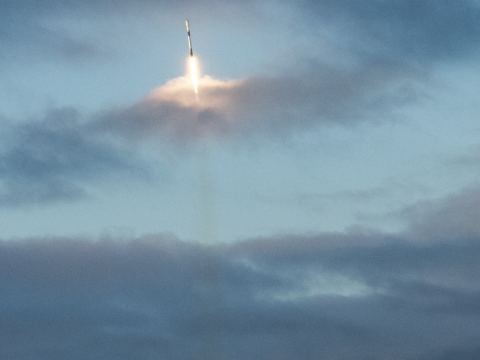Data Interoperability Unlocked: Empowering the Air Force for Fifth- and Sixth-Generation Warfare
Modern warfare demands coordinated actions across the armed services and with foreign allies. However, current Air Force communication networks and mission command and control systems were not designed, developed or deployed to enable seamless data sharing. While interconnected warfighting requires a shift from service-specific mindsets and operational norms, it also requires a shift from a network-centric to data-centric paradigm.
Create a Common Data Layer: Connect Disparate Data With Access Controls
Creating an enterprise data layer is the best solution for the Air Force to enable this paradigm. A common data layer allows the right data to get to the right decision maker at the right time—whether they are piloting an F-35A, coordinating a multilateral military exercise or operating an uncrewed vehicle from a remote location.
“Zero-trust for data” platforms create a common data layer and are well suited for the DoD environment. With fine-grain attribute-based access control, these platforms support the integration and analysis of data from federated data sources of varying classification levels. Combined with best-in-class data management services for rapid data transport, ingestion and indexing, these platforms support end-to-end, multilevel security.
With the right zero trust for data platform, the Air Force can quickly integrate millions of records per second from multiple data sources to prepare data for low latency ingestion into decision-support applications and analytics. Sustained effectiveness requires ongoing monitoring and optimization, security enhancements and continuous development.
Empower the Edge With Actionable Intelligence: Integrate AI Into C5ISR
Integrating AI into command, control, computers, communications, cyber, intelligence, surveillance and reconnaissance (C5ISR) is rapidly transforming the battlefield. AI makes the common data layer even more powerful for data interoperability.
AI orchestration tools added to the common data layer use cutting-edge algorithms and a scalable architecture to sift through vast amounts of data, prioritize information and present actionable intelligence. By effectively managing sensor inputs, intelligence feeds and communication streams, AI orchestrators direct targeted and timely information to commanders, operators, and warfighters. The best of these orchestration tools are highly adaptable and have robust integration capabilities.
AI algorithms analyze historical and real-time data to identify patterns, anomalies and correlations that might signify emerging threats or opportunities. With this predictive threat analysis, C5ISR operators can share anticipatory intelligence grounded in pre-emptive actions with joint and coalition forces. The most useful orchestration tools for the Air Force support both “high-code, high-customization” and “low-code, no-code” capabilities that allow non-technical users to do meaningful work in secure environments.
Multiply Impact With Network Integration: Connect the Common Data Layer With External Data
Enriching the common data layer with external data can expand situational awareness for Air Force commands and enrich the value of information shared in coordinated operations. Strategically valuable external data sources include national intelligence data, DoD sensor data, coalition partner data and open-source data.
To facilitate this integration, the underlying architecture must allow for the seamless integration of multiple and adapting battlespace networks to “feed” the common data layer. Once integrated, the networks must be resilient and have the speed, functionality and interoperability to continually push data to the common data layer. When data is government owned, and the government has all of the data rights, the Air Force can access and utilize any data via the common data layer. Further, this data can be distributed to authorized users through customizable, API-enabled applications.





Comments